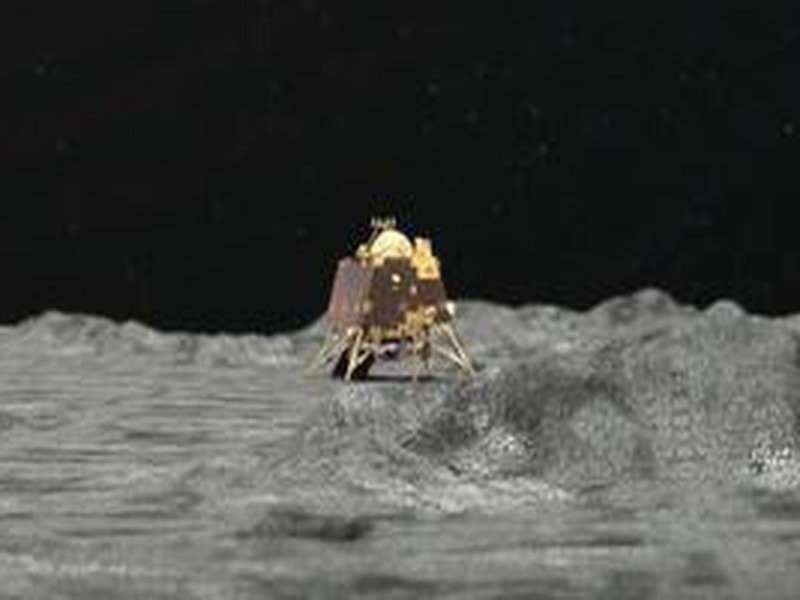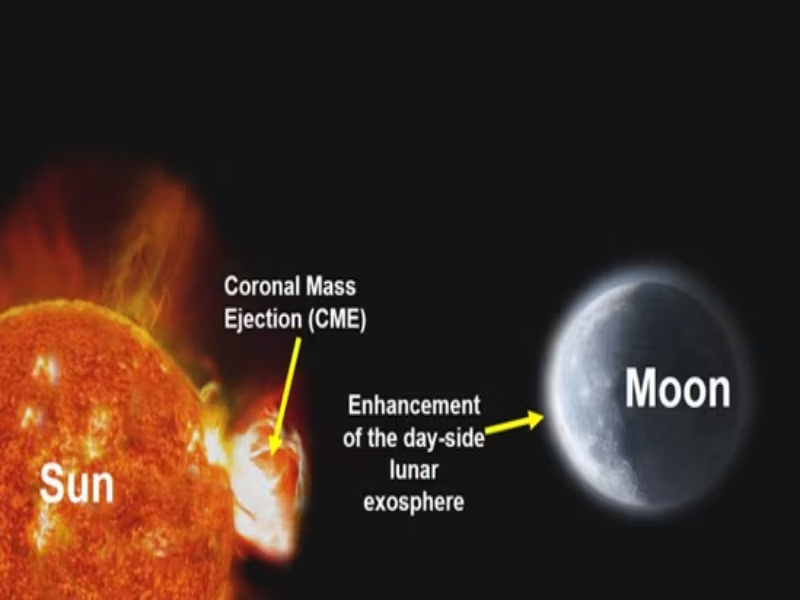Chandrayaan-2 lunar orbiter of India became the first to observe the impact of the coronal Mass Ejection (CME) of the Sun on the Moon, and one of the scientific instruments onboard, the Atmospheric Composition Explorer-2 (CHACE-2), was used to study the Moon on Saturday.
The CHACE-2 observations indicated that the total pressure of the lunar exosphere (fragile atmosphere) increased during the dayside lunar exosphere during the CME impact on the Moon.
The observed values of the total number density (number of neutral atoms or molecules in an environment per unit volume) increased by at least an order of magnitude.
The official statement stated that this rise is in line with the previous theoretical models, which had shown the existence of such an effect, but CHACE-2 onboard Chandrayaan-2 has seen such an effect first time.
The Earth’s Moon holds a fragile atmosphere that belongs to the ‘exosphere’ system, which means that the atoms of gases and molecules living in the environment of the Moon do not interact too often, even though they coexist.
The surface of the Moon is the demarcation of the exosphere, and, therefore, the exosphere of the Moon is a sub-category of ‘surface boundary exosphere.’
Several processes form the exosphere on the moon, which include the interactions of solar radiation and solar wind (ions of Hydrogen, Helium, and a small quantity of heavier ions emanated from the Sun) and the collision of the meteorites with the surface of the moon.
Through these processes, atoms and molecules on the surface of the Moon are released, becoming a component of the exosphere.

Generally speaking, the exosphere of the Moon is very susceptible to even slight changes in such factors, which led to its formation, and one of them is the release of the coronal mass of the Sun, also referred to as CME (short form of Coronal Mass Ejection)
CMEs occur when the Sun expels large volumes of its material, which is predominantly made up of Helium and Hydrogen ions.
These effects are large on the Moon, since the Moon is an airless body that also lacks any global magnetic field, the existence of which would have shielded at least in part the solar effects on its surface.
This was a unique chance to directly see how the CME would affect the Moon, as on May 10, 2024, a sequence of coronal mass ejections (CMEs) was launched by the Sun.
This augmented amount of the solar coronal mass that hit the Moon augmented the procedure of stripping off the atoms on the lunar surface, thus, liberating them to the lunar exosphere, which appeared as an augmentation of overall pressure in the sunlit lunar exosphere.
This observation would provide a scientific insight into the understanding of the lunar exosphere and space weather impacts on the Moon.
Besides stretching the boundaries of our scientific knowledge concerning the Moon and the space weather of the Moon (the effect of the Sun’s emissions on the Moon), this observation also suggests the difficulty of establishing scientific facilities on the Moon.
The architects of lunar bases must take into consideration such extreme occurrences that would cause a temporary change of the lunar atmosphere before it occurs again.






